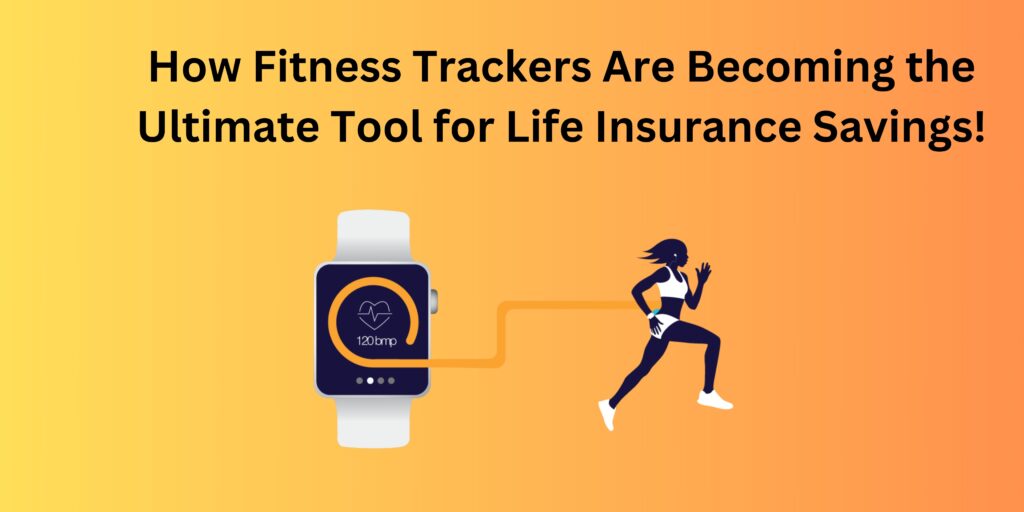What if your daily steps, heart rate, and sleep patterns could help you save money on life insurance? Thanks to fitness trackers, this is now a reality! Insurance companies are increasingly using wearable technology to assess health risks more accurately, offering lower premiums to individuals who maintain an active lifestyle.
This article explores how fitness trackers are transforming the life insurance industry, why insurers are embracing this technology, and how you can leverage it to reduce your insurance costs significantly.

The Traditional Life Insurance Model: Why It’s Outdated
For decades, life insurance pricing has been based on broad, static factors such as:
- Age and gender – Younger individuals typically get lower premiums.
- Medical history – A one-time medical exam determines your risk level.
- Lifestyle choices – Smokers and high-risk individuals pay higher premiums.
- Occupation and family history – Risky jobs and hereditary diseases increase costs.
This model often results in unfair pricing, where individuals who maintain a healthy lifestyle end up paying the same as those who don’t. But fitness trackers are changing the game.
Read more:
What Are Fitness Trackers, and How Do They Work?
Fitness trackers are wearable devices that monitor various health metrics in real-time. Popular brands include:
- Fitbit
- Apple Watch
- Garmin
- Samsung Galaxy Watch
- WHOOP and Oura Ring
These devices collect data such as:
- Step count
- Heart rate
- Caloric burn
- Sleep patterns
- Blood oxygen levels
- Stress and recovery data
By continuously tracking these metrics, fitness trackers offer a more accurate picture of an individual’s health than a one-time medical exam.
How Fitness Trackers Help You Save on Life Insurance
1. Personalized Premiums Based on Real-Time Health Data
Traditional insurance policies rely on outdated underwriting models, but fitness tracker-integrated policies use real-time data to determine risk levels.
How It Works:
- If you maintain an active lifestyle, your risk profile improves, leading to lower premiums.
- The insurer continuously assesses your health instead of relying on a single check-up.
- More transparency and fairness—you only pay for the risk level you actually have.
Example:
John, a 35-year-old non-smoker, uses a Fitbit and consistently logs 10,000 steps daily. His insurer rewards him with a 15% discount on his premiums.
2. Incentives and Rewards for Staying Active
Many insurers now offer wellness programs that reward users for maintaining good health habits. These rewards may include:
- Lower monthly premiums
- Cashback or gift cards
- Discounted gym memberships
- Free health check-ups and telemedicine services
Example:
AIA Vitality offers premium discounts and shopping vouchers to users who meet step-count goals.
3. Faster and More Convenient Policy Approvals
With traditional policies, approvals can take weeks or even months due to medical exams and paperwork. Fitness tracker-based policies simplify the process.
Benefits:
- No medical exams required for low-risk individuals.
- Instant approvals for applicants with a strong fitness profile.
- Less paperwork and a hassle-free process.
Example:
Bajaj Allianz’s AI-driven health tracking system allows healthy individuals to get insured within minutes.
4. Preventing Fraud and Encouraging Honesty
Insurance fraud costs billions annually, often resulting in higher premiums for honest policyholders. Fitness trackers help prevent fraud by:
- Providing verifiable, real-time data.
- Reducing the chances of false claims.
- Encouraging policyholders to honestly disclose their health status.
Example:
MetLife’s AI-powered fraud detection system has helped cut down fraudulent claims by over 40%.
5. Encouraging Preventive Healthcare
Instead of just reacting to illnesses, fitness trackers promote preventive healthcare, leading to long-term savings for both individuals and insurers.
Why This Matters:
- Users detect health issues earlier, avoiding expensive medical treatments.
- Insurers benefit from lower claims, reducing costs for all customers.
- Encourages healthy habits that improve overall well-being.
Example:
ICICI Lombard’s “Wellness Program” rewards policyholders who complete regular health screenings and stay active.
Challenges and Concerns
While fitness tracker-based insurance is promising, there are a few challenges:
1. Data Privacy and Security
- Users may be concerned about how their health data is stored and used.
- Insurance companies must ensure secure data encryption and user consent.
2. Device Accuracy and Reliability
- Not all wearables provide 100% accurate data.
- Insurers should account for potential discrepancies.
3. Accessibility and Affordability
- Not everyone can afford a premium fitness tracker.
- Insurers may need to offer subsidized devices for wider adoption.
The Future of Fitness Tracker-Based Life Insurance
The integration of fitness trackers into life insurance is just the beginning. Here’s what we can expect in the future:
- More insurers adopting wearable technology for underwriting.
- Deeper AI integration to analyze long-term health trends.
- Personalized health coaching bundled with insurance plans.
- Blockchain-based data security for transparent and tamper-proof records.
- More partnerships between insurers and tech companies to improve accessibility.
FAQs
They provide real-time health data, allowing insurers to offer personalized discounts based on your activity level and overall wellness.
Popular options include Fitbit, Apple Watch, Garmin, and WHOOP, but it varies by insurer.
Not necessarily, but consistent usage provides more accurate health data and better rewards.
Most insurers use secure encryption and require user consent before accessing data.
Yes, many insurers now allow policyholders to upgrade or integrate wearable tech tracking into existing plans.
Conclusion
Fitness trackers are revolutionizing life insurance by making policies more affordable, fair, and health-focused. With personalized pricing, real-time health monitoring, reward programs, and fraud prevention, these smart devices are turning insurance into a win-win situation for both insurers and policyholders.
If you already use a fitness tracker, you might be missing out on huge insurance savings. It’s time to explore how you can leverage this technology to live healthier and pay less for life insurance!
Would you switch to a fitness tracker-based insurance plan? Let us know your thoughts!